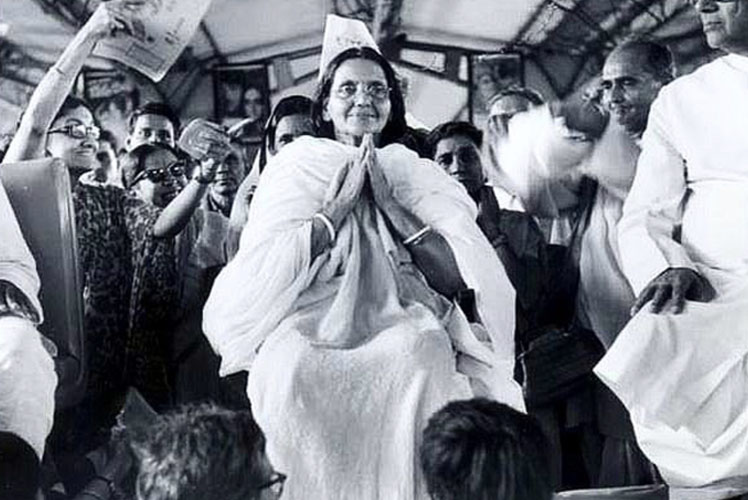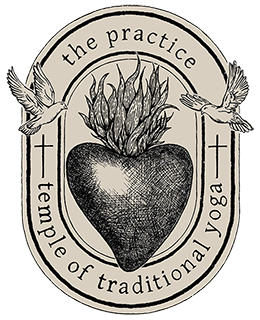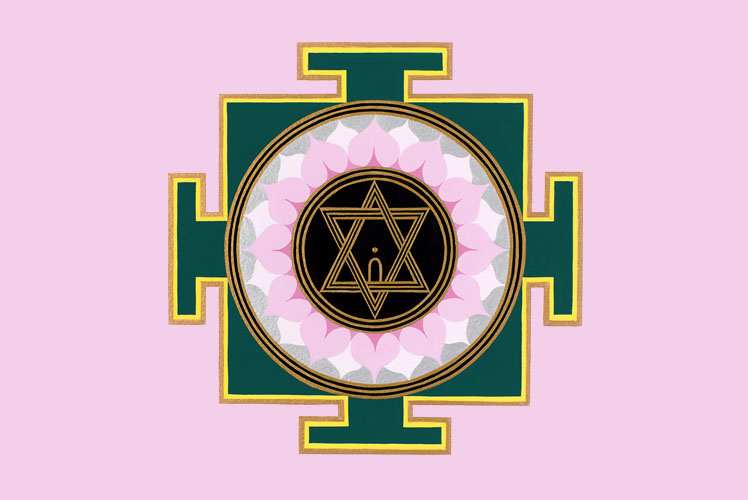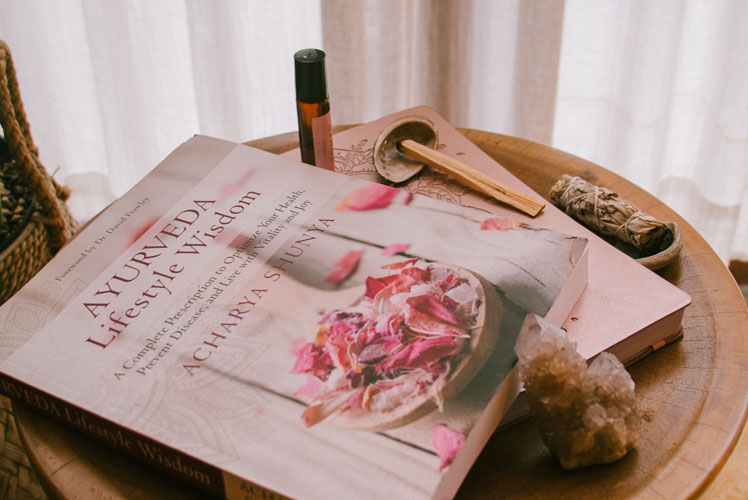By Emma Salvado..
Anandamayi Ma was born Nirmala Sundari (Translated- Immaculate Beauty) in 1896 in West Bengal. Her name was extremely appropriate for her , because she was not only spiritually beautiful , but physically beautiful too.
She was regarded as a happy and contented child by all who knew her, but not particularly intelligent. As a child she had a tendency to stop all activity, and stare off into space for long periods of time, which made her parents and those who knew her extremely uneasy.
Their concern started the day she was born, because their newborn infant didn’t cry. Years later, when asked about this Anandamayi Ma responded “ Why should I cry? I was watching the tree’s through the slats in the window”
After 2 years in school Nirmala was taken out of education to begin full time housekeeping, and at 13 yrs old was betrothed to her future husband Bholanath.

Five years later she married him, and they moved in together, but much to Bholanath’s annoyance his beautiful bride refused to consummate their relationship.
His annoyance with his new wife grew greater, when he awoke in the night to find his wife, contorting her body in mysterious ways on the floor , and making odd sounds.
He became convinced that his wife was possessed and asked for some help from an exorcist.
Neither Bholanath nor Nirmala had any kind of formal training, so they didn’t know at the time that Nirmala was actually spontaneously assuming Hatha Yoga postures, and the strange sounds she was channeling were actually sacred Mantras.
Throughout most of her early life Nirmala passed through various stages of Sadhana, without realising. She remained in a lucid witnessing state in yoga called Sakshin. She was unaware that she was doing anything, it was all just happening.
She shocked her family, and husband even more, when she refused to Bow down to her elders , which was customary in India. Nirmala said she heard a voice that told her “You are not to bow down to anything….. You are everything.”
Through this message, she realised, the universe was her own Manifestation.
This was such an unbelievable realisation for an illiterate young woman , who had never had a Guru to guide her.
So she was encouraged to seek out a teacher to formally initiate her into spiritual life. So Nirmala went to all of the local pandits to initiate her, but none of them would, they were uninterested in teaching a poor low caste illiterate girl.
On the 3rd August 1922, in a break with the entire history of Hindu tradition , Nirmala initiated herself. Such was her self Realisation.
Yoga teacher, the Guru, the mantra he or she imparts, and the mantra are all one. The Guru receives the mantra from the sages of the lineage through meditation, and initiates the student into it. Amandamayi Ma dramatised this unity, when she played the parts of teacher and student simultaneously. Her higher self conferring the mantra to her lower self, she received the mantra directly from the divinity within.
In 1922 after her initiation, her husband finally realised that she had not been possessed by demons, but realised in fact that she had been possessed by God.
So he asked to become her first student…
This unorthodox act was criticised by many people around them, because it was seen as improper for a male to bow at his own wife’s feet.
Anandamayi Ma ( Joy Permeated – In Sanskrit).
As she was now known as , followed her husband to Dhakka where he was given a job as gardener of an Estate. He and his wife moved into a cottage there, and she began her work of healing devotees and chanting the glories of God.
In 1924 Anandamayi Ma stopped feeding herself , her hands would simply not carry food to her mouth , so from that moment onward until her death , she was only ever fed by her husband or her devotees.
Her Inner Guide (Kheyal) directed her life course, and was seen as sometimes being impulsive or erratic.
The esteem for Anandamayi Ma grew, and was reflected in her appearances at the Kumbh Mela ( the biggest religious gathering in the world). The Kumbh Mela is a religious fair which draws millions of pilgrims, and is seen as an opportunity for religious leaders to promote themselves and often rival other religious dignitaries. However Ma’s appearance there was revered by all who went to see her. Disputes and and Egoism were left at the door, by all who went to see her, just to sit in silence in her presence.
It was here that Anandamayi Ma was given the title of UNIVERSAL MOTHER. A saint whose compassion knew no boundaries , caste or religious background. All were AWED into stillness in her presence.
Many Westerners’ introduction to the UNIVERSAL MOTHER was in Paramahansa Yogananda’s “Autobiography of a Yogi” when he asked her about herself, and she replied….
“My Consciousness has never associated itself with the temporal body. Before I came to this earth I was the same. As a little girl, I was the same. I grew into Womanhood, but I was still the same. Ever afterwards through the dance of creation changes around me in the hall of eternity, I shall remain the same.”
Her message was not one that she taught… it was what she embodied…And what she was.
She was a radical example of a truly liberated woman. She loved everyone who came to her, as if they were her own children, and yet she remained unattached to anyone or anything. She selflessly served others, traveling from place to place to give people access to her “Divine Presence.”
She was a living example of the Goddess.
She supported you in whatever Sadhana you had, it didn’t matter what religion you were. If you were Christian and came to Ma, she would initiate you with the name of Jesus as your Mantra. She saw no separation, she never stressed loyalty. But ultimately the people who came to her knew who their Guru was…
She took Samadhi in 1982 at the age of 86 leaving behind the Bhav of emotional legacy of being…
“The most perfect flower Indian soil has ever produced.”


